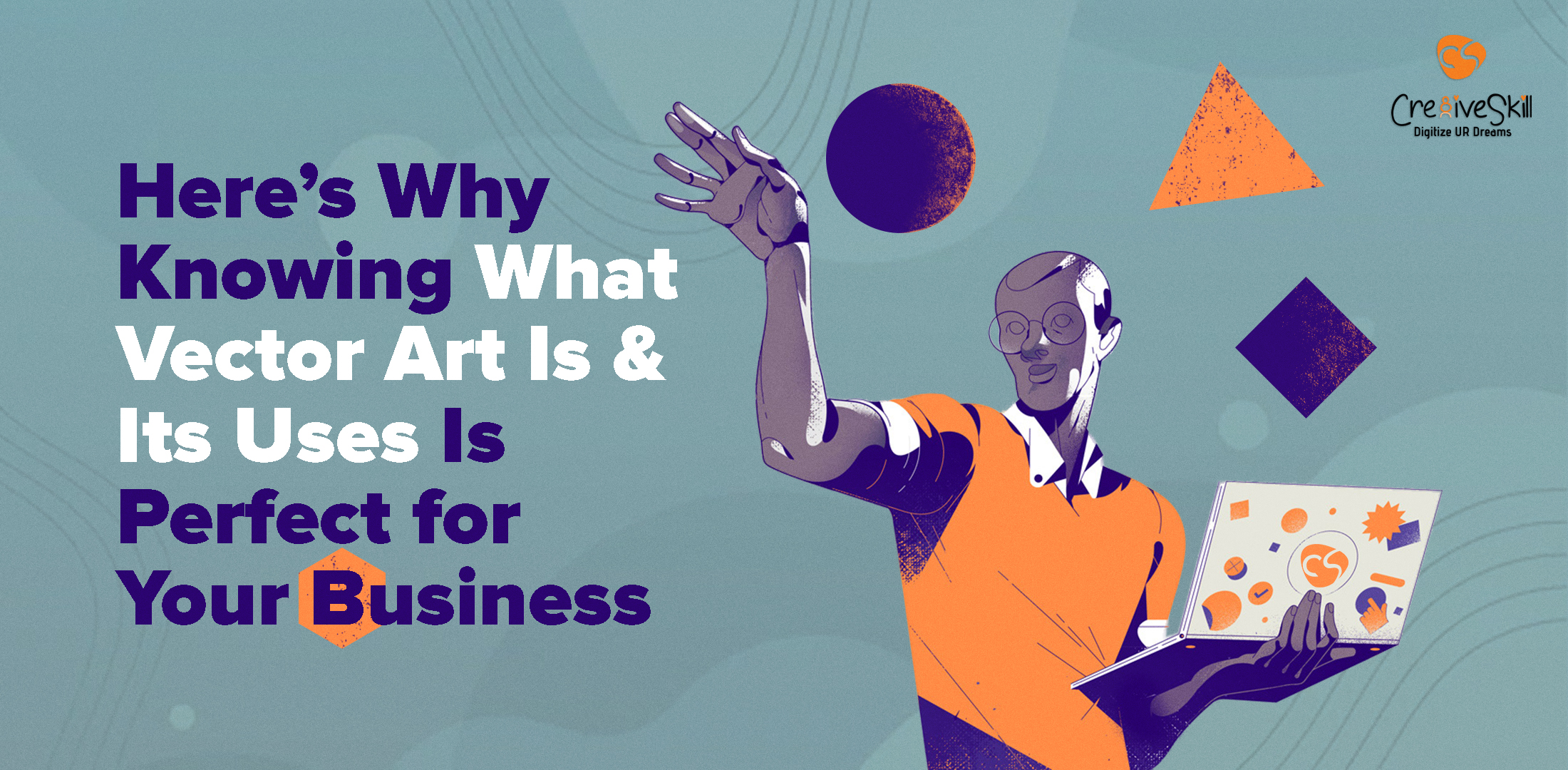What Is Vector Art
Vector ArtAs you scroll through your social media feeds, it’s hard to miss the influx of vector art taking over. From advertisements to movie posters, this modern trend is hard to ignore. But what is vector art? And why is it such a popular choice among businesses and creatives?
We all know what art is. It’s the Mona Lisa, it’s that painting of the boats on the river in Venice, and it’s the statue of David. If you’re like most people, you probably think of vector art as being something that’s been around for a long time. You’d be right - vector art has been used in advertising and design for decades.
But what is vector art? Many people don’t even know it exists, and those who do often think it’s just a lesser form of “real” art. You may not know that vector art is becoming more and more popular today.
In this blog post, we’ll explore the definition of vector art, its benefits, and some examples of how you can use it in your own work!
Here’s What Vector Art Actually Is
.jpg)
Have you ever seen the logo or graphic for a company and been so impressed with its beauty? It was most likely created using vector artwork. Vector arts are made up of thousands of small shapes called vectors (clean lines drawn precisely as desired) - resulting in more aesthetically pleasing designs!
In short, vector art is created by using mathematical formulas to define points in two-dimensional space. These points are then connected by curves, resulting in a clean, cohesive image. Unlike traditional forms of art, which rely on tangible media like paint or charcoal, vector art can be displayed electronically without any degradation in quality.
Vector artwork is a great way to create designs that can be endlessly customized. With each element of the design being manipulated separately, you have incredible control over how your sign or logo will look in various formats without having any worrying fidelity issues like gradients suddenly becoming blurry when reduced downsized too much.
The bottom line is – vector means permanent.
Why Is Vector Art Becoming More Popular Now
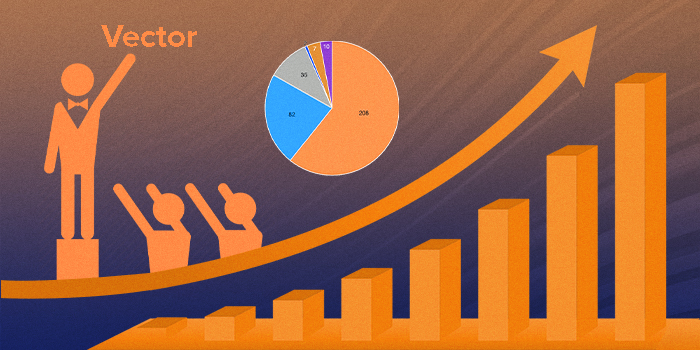
Looking for a way to stand out from the rest? If so, vector art may be the perfect solution for you.
Vector art design is a modern trend gaining popularity among artists and business people alike. Unlike traditional art forms, vector art can be scaled to any size without losing quality. This makes it the perfect medium for creating logos, illustrations, and other graphics.
There’s no doubt that vector art is on the rise. Graphic designers are discovering the unique capabilities of the vector art software, and the results are stunning. Vector art, in general, is an illustration made up of geometric shapes that can be manipulated to create any shape or image you like.
You see it more and more often in commercials, on websites, and in other forms of digital media. Thanks to its growing popularity, dozens of software programs are explicitly designed to create vector art.
In addition, online communities have sprung up around this medium, providing businesses with vector artwork services and consultation. If you are thinking about getting some help, we assure you that none surpasses Cre8iveSkill.
Different Vector Image File Types
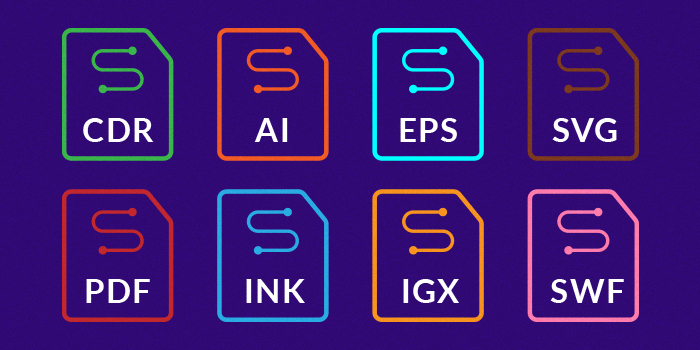
To understand vector image file types and formats, you must first understand what vectors are. As I have already mentioned earlier, vectors are mathematical objects that allow the creation of shapes with points and curves.
Vector file formats store graphics as vectors, allowing you to edit them at any size without losing quality. There are dozens of vector file formats, but some of the most popular ones include SVG, EPS, and AI, each with its own unique uses.
If you need to create or edit vector graphics, it’s important to use a vector image file type.
• AI
Short form for Adobe Illustrator. It is a great tool to use if you’re looking for an artistic touch on your vector art project. The AI file type is usually used in print media and digital graphic designing, such as logos.
This file format is best suited for creating logos and illustrations.
• EPS
Short form for Encapsulated PostScript. The EPS file format has been around for quite some time, and it’s an older type of vector graphics that don’t support transparency as more modern files do.
The EPS file format is mainly used for print design.
The Portable Document Format was designed to exchange documents across platforms and is editable in Adobe Acrobat.
• SVG
The Scalable Vector Graphics format is often used on the web to create stunning visuals for websites and ads. It’s based on XML (a markup language readable by both machines and humans) which can be indexed.
How Can You Benefit From Vector Artwork?
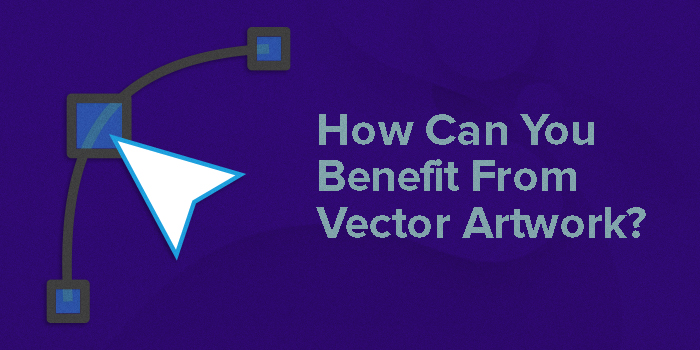
Is there anything more frustrating than spending hours on a project, only to have it look terrible when you’re finished? If you’ve ever felt that way, you’re not alone. In fact, many people struggle with creating high-quality art. But what if there was an easier way? Vector art can help you create stunning visuals with ease.
Believe it or not, there are many benefits of using vector art over traditional artwork methods. Here are just a few:
1. Vector art is scalable:
This means that it can be enlarged or reduced without any degradation in quality. When you use traditional artwork methods such as Photoshop or Illustrator, the image becomes pixelated when it’s enlarged. However, with vector art, your image will always stay sharp and clear.
2. Vector art is easy to edit:
You can easily make changes to your designs without having to start from scratch. You can change colors, shapes and even add text without affecting the quality of the image.
3. Vector art is versatile:
It can be used anywhere, from print to electronic media. Whether you want to use it on a huge advertisement board across the road or make a commercial video ad using vector artwork, it is up to you.
4. Vector art is web-friendly:
Vector artworks are search engine friendly since search engines can easily index them. They have smaller file sizes, allowing the web pages to load much faster and provide an optimized experience.
5. Vector art is clean and professional:
Unlike raster graphics (which are made from pixels), vector images are crisp and sharp with no blurred details and visible pixels. The clean designs allow the images to be much more aesthetic than raster images. In addition to that, vector artwork looks more professional.
6. Vector art is more creative:
With vector graphics, there’s no limit to what can be designed. No more worrying about resolution size or how an image will look on different screens; this allows designers the freedom they need in order to make their creativity shine through without any trouble at all, with quality preserved throughout.
7. Vector art has more industrial uses:
Vector art is relevant in many different industries. For example, interior designers often use vector art when designing office spaces. Home decorators enjoy using them for layout projects like furniture arrangement or color schemes; fashion houses now incorporate varying forms into their clothing lines.
How To Start Creating Vector Art And Become A Vector Artist
One of the most pleasant and thrilling creative products is vector graphics. Playing with shapes and colours is sheer joy once you've mastered the basics. The first step in becoming a vector artist is to select a vector design software.
There are many options on the market, some of which are free and others which are charged, but Adobe Illustrator is the industry standard. To begin, you can select any programme that meets your requirements. Once you've decided on a software package, study the fundamentals of tools such as the pen tool, basic geometric forms, brush tool, pencil tool, and so on.
The process of vector illustration is a lot of fun. You can create work that is both dramatic and eye-catching, as well as subtle and elegant. It takes effort and dedication, just like anything great in life. However, if you start with a basic understanding of the tools, such as the pen, shape, and brush tools, and then go on to learn about and experiment with other tools and effects, you'll be well on your way to generating great vector graphics in no time.
There are a plenty of online resources for learning about vector illustration, as well as amazing artists who create jaw-dropping artwork to motivate you to pursue a career as a vector artist. It's only an issue of time and dedication as to how much effort you put into being a vector artist.
Making vector illustrations is a great way to show off your creative skills. Vector digital art is produced by vector graphic design software by using mathematical formulas to generate simple shapes between points instead of combining millions of pixels.
To create vector artwork, different points are created, also called nodes. Those nodes are then joined together using lines (or paths) to build different shapes.
Here’s How You Can Start Creating Your Own Vector Art
1. Choosing The Software
Vector graphics software is a powerful and versatile tool that allows users to create stunning designs and manipulate images using geometric and mathematical commands. You can choose any vector software you like, but keep in mind that it should.
• Provide you with all the vector image editing tools and options
• Allow you to export multiple file types that are associated with vectors.
The most commonly used vector graphics softwares include:
Paid
Adobe Illustrator, CorelDRAW, DrawPad, Canvas X, Figma
Free
Sketch, Inkscape, Krita, Boxy SVG
2. Mastering The Tools & Shapes
One of the first and most important things to learn as a vector artist is becoming proficient at the use of pen tools, basic shapes, and operations like Pathfinder.
Once you get accustomed to that, master the use of colors, pencil tools, and brushes of different types to trace or draw freehand.
Knowing how and which shapes to add and working with layers is also crucial to creating flawless vector artwork.
There are generally three things you should always keep in mind while creating a vector image.
1. It Should Be Clean
Your vector art design should not be cluttered. A cluttered design is often hard to read because there are too many redundant elements. It would also make a vector image harder to edit or change.
2. It Should Be Simple
Making a vector image is all about simplicity. Nothing complex is required. Simple shapes would get your work done.
3. It Should Be Bold
The overall vector design needs to be bold to have your vector lines and nodes click together. Use good color schemes to ensure that the designs are aesthetic.
What Tools Can Be Used To Create Vector Graphics
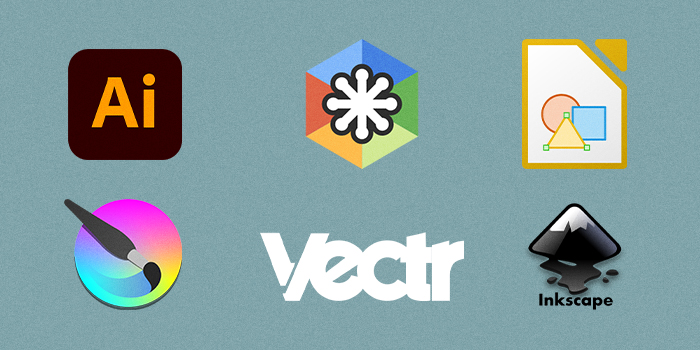
Have you ever seen those fantastic-looking vector graphics and wished you could create something like that yourself? Well, you can! There are several tools available to help you create vector graphics. In this section, we’ll take a look at some of the most popular tools.
1. Adobe Illustrator
Illustrator is perhaps one of the most used softwares for creating vector artwork and graphics. Its vector tracing and creation only require a few clicks.
2. Krita
Krita is an open-source graphics editor that has become a pretty handy tool for creating, importing, and exporting vector graphics.
3. Boxy SVG
It is one of the simplest and most lightweight tools that gives you all the basic options to get straight into making vector graphics without much complexity.
4. Inkscape
nkscape is one of the best open-source vector editing softwares that professionals use. It gives you unlimited manipulation options to create flawless vector graphics.
5. Vectr
Vectr is a good online software that beginners can use to create vector artwork. The less complex and basic UI gives it an upper hand for all the entry-level vector editing options like borders and shadows.
6. LibreOffice Draw
It is a great vector editor with just the right tools for editing vector images with technical drawings such as flowcharts, diagrams, and tables.
Use of Vector Art in Different Industries
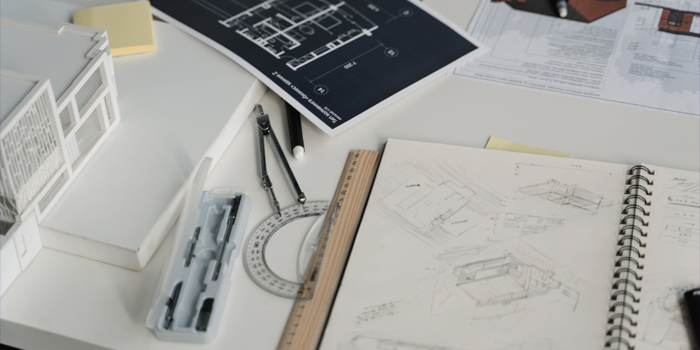
There is no doubt that vector art has revolutionized the world of graphic design. Its sharp lines and clean shapes make it the perfect medium for creating high-quality illustrations and logos. But what many people don’t realize is that vector art can be used in a variety of industries, There are so many industries that thrive due to graphic design.
In this section, we’ll take a look at some of the different ways vector art can be used to get amazing results in various industries.
Embroidery Digitization
Embroidery digitizing is the process of transforming a graphic image into stitches that can be sewn onto fabric. While there are many different ways to create digital embroidery files, vector art is often used because it is easy to create and edit.
Textile Industry
There is a constant need for new and innovative designs in the textile industry. This is where vector art comes in. Vector art is a type of graphic design that uses mathematical equations to create images. This makes it perfect for creating intricate designs that can be used in textiles.
Additionally, because vector art is created using math, it can be scaled up or down without losing any quality. This makes vectors the perfect choice for use in textile design.
Marketing Industry
Designers often use vector art in advertising and marketing materials. It can be used to create a logo or as part of a larger graphic design. Vector art is resolution-independent and can be enlarged or reduced without losing quality.
This makes it an ideal format for printing large graphics or displaying on electronic devices with different resolutions.
When it comes to images, there are two main types: raster and vector. Each has its own strengths and weaknesses, which is why it’s essential to understand the difference. We’ll briefly look at vector vs. raster images in the next section.
Raster Vs. Vector – How Raster Images Are Different From Vectors
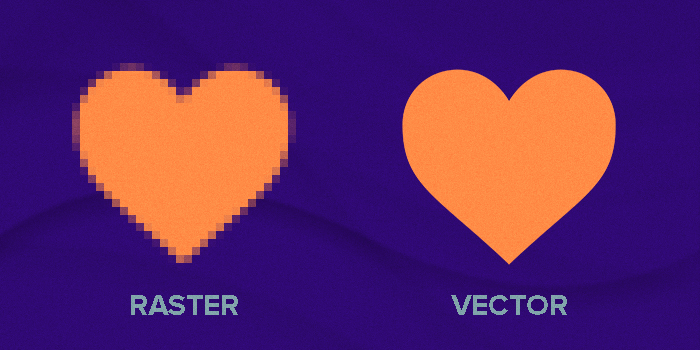
We all know what images are – a visual representation of something, usually on a screen or in print. Images can be photographs, illustrations, or even designs. You’ve probably seen both raster and vector images before, but do you know the difference between them?
Raster images are a thing of the past because they’re outdated, difficult to use, and don’t meet today’s customer needs. They’re hard on the eyes too. On the other hand, vector artwork is easier to edit and scale up or down while maintaining quality. Designers are now using vector-based solutions for modern projects for these reasons.
In this section, we’ll take a look at the differences between raster and vector images and explain why vector art might always be preferable to the other.
Image Enlargement & Enhancement:
Raster Images
When it comes to scaling the raster images, the final results are pretty disappointing. The enlargement causes a significant decrease in quality, so you can’t scale up without losing some detail.
Vector Images
Because vector art is made from mathematical equations, it can be scaled to any size without losing any quality. This makes it perfect for logos and illustrations, which need to be displayed in different sizes.
Image File Size:
Raster Images
With raster graphics, you are storing an entire image rather than just the outlines of your design. This takes up much more storage space, making the raster files pretty large.
Vector Images
When it comes to file size and storage space, vector images take up much less space and have a smaller file size than their raster counterparts.
Designing Process:
Raster Images
The time spent rendering raster pixels takes too much effort than designing the customizable vector paths. Editing photos/PDFs converted back into RGB values is laborious at best. With the rise of digital printing, raster designs became less popular because they are difficult to edit and incorporate changes.
Vector Images
On the other hand, vector artwork allows faster modifications and edits. The rise of vector graphics led to an almost overnight revolution in design, giving us much more flexibility and ease when it comes time for editing or creating new designs. When working with them, you don’t need as much patience, time, effort, or skill.
Cost-Effectiveness:
Raster Images
As raster images take a lot of time and effort to incorporate any changes or editing, their production, enhancement, and edits are more expensive than their vector counterparts.
Vector Images
Vector artwork allows you to create intricate designs without putting too much effort in, which means you can get your designs done faster and cheaper.
Why Choose Cre8iveSkill for Your Vector Artwork
When it comes to getting the best of vector art, you need someone who understands your needs and requirements while providing quality services at an affordable price. Going for Cre8iveSkill’s excellent Vector services will ensure that there are never any regretful decisions.
Cre8iveSkill understands your needs and is committed to providing the best service for a great price. We are not just any artist; we take time with each client so you can have beautiful vector art that reflects who YOU are!
With our top-notch expertise, use of online tools, and quick turnaround time, you can get your vector designs in a much more cost-effective way.
